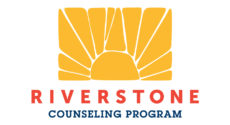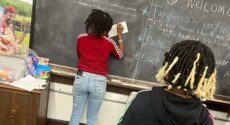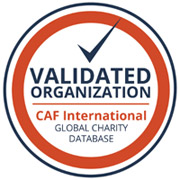“In early March, Vermont began to shut down due to the spread of the Coronavirus. The end of the school year was traumatic for our youth,” says Marelyn Segura of Spectrum’s Multicultural Youth Program. “Their families were stressed out and afraid…. and it was up to the children who speak some English to explain to their parents what was going on.”
“Many New Americans are coming from war zones and other dangerous situations and when they arrived here, they were hit with a pandemic in a language that they don’t know.” Marelyn says, “It has been very complicated and difficult for them—they had to stay inside all the time and they have no idea why.”
As Vermont began to shut down, Alison Segar, a social worker in Spectrum/Howard Center’s JOBS program, quickly realized many people in non-English speaking communities would need access to COVID-19 information in their native language. She partnered with Mohamed Jafar, who speaks Somali, to create the first in a series of over 400 videos about the pandemic.

Since that initial video, Alison and Mohamed have collaborated with 7 local organizations to create and disperse informational videos of trusted community leaders speaking about the pandemic in different languages: Spectrum’s Multicultural Youth Program staff, Howard Center, Association of Africans Living in Vermont (AALV), U.S. Committee for Refugees and Immigrants Vermont (USCRI), the University of Vermont Medical Center, the Vermont Health Department and the Community Economic Development Office (CEDO) in Burlington.
The group is now known as the Vermont Multilingual Coronavirus Communication Task Force and the videos have covered many topics including specifics about the virus, staying safe, face mask protocols, testing and now vaccination information. Initially each video was released in more than a dozen language and now the ten core languages spoken in Chittenden County including Spanish, Swahili, Somali, Nepali and Vietnamese are produced. The videos have been released on YouTube with over 22,500 views and 166 channel subscribers, and the videos are shared via the member organizations and case managers. Sound files of the videos made are sent out to the Burlington and Winooski schools as well as BHA and are shared through their robo-call system.
Marelyn says that one youth told her that “her mother does not speak English and was completely confused why everyone was using masks. This young person was able to explain what the pandemic was through the videos—including the procedural videos about how and why to wear a mask when going outside.”
Not only have the videos been helpful to our youth and their families, but the Task Force learned how to communicate quickly with non-English speaking communities during crisis. As Alison points out, “Before this pandemic, there was an ongoing communication gap when it came to community or statewide issues between English-speaking and non-English speaking communities in Vermont. It is an issue of equity and now we’ve learned a lot about how to reach out effectively—I hope the work that we have done and the connections that were made will continue.”

from November, translated into Spanish.














